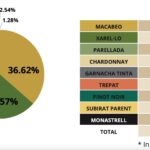Medicare is a comprehensive health insurance program in the United States for people aged 65 and older, younger individuals with disabilities, and people with End-Stage Renal Disease. It’s divided into different parts, each covering specific types of healthcare services. Among these, Medicare Part C, also known as Medicare Advantage, stands out as an alternative way to receive your Medicare benefits.
Medicare Part C wasn’t always called Medicare Advantage. It was established as Medicare+Choice (M+C) under the Balanced Budget Act of 1997. This legislation, effective in January 1999, marked a significant shift by allowing the Centers for Medicare & Medicaid Services (CMS) to contract with private health insurance companies. The goal was to offer Medicare beneficiaries a broader range of health plan options beyond Original Medicare (Part A and Part B). These initial options included coordinated care plans like Health Maintenance Organizations (HMOs), Preferred Provider Organizations (PPOs), Provider-Sponsored Organizations (PSOs), as well as Medicare Medical Savings Account (MSA) plans, Private Fee-for-Service (PFFS) plans, and Religious Fraternal Benefit (RFB) plans. Crucially, these plans were designed to cover all the benefits of Medicare Part A (hospital insurance) and Part B (medical insurance), and many went further by offering extra benefits not included in Original Medicare.
The landscape of Medicare Part C evolved further with the enactment of the Medicare Prescription Drug, Improvement, and Modernization Act of 2003 (MMA). This act, passed in December 2003, officially renamed the Medicare+Choice program to Medicare Advantage (MA). The MMA brought about further improvements and choices for beneficiaries under Part C. It refined how benefits were structured and payments were made to these plans. New plan types were introduced, such as Regional PPO (RPPO) plans and Special Needs Plans (SNPs), catering to more specific healthcare needs. Furthermore, the MMA also established Medicare Part D, the prescription drug benefit, and amended Part C rules to require most MA plans, particularly coordinated care plans, to include prescription drug coverage.
It’s important to distinguish Medicare Advantage (Part C) from other Medicare health plans. Besides MA plans, there are also section 1876 cost contract plans and section 1833 health care prepayment plans (HCPP plans). Cost contract plans operate differently; they are reimbursed based on the actual costs they incur in providing Medicare-covered services to their members. Enrollees in these plans have the flexibility to use the plan’s network or access healthcare through Original Medicare. Section 1833 HCPPs, typically sponsored by employers or unions, are managed care plans focusing on Part B benefits on a prepayment basis. Medicare compensates HCPP plans for Part B services only, and similar to cost plans, payments are based on reasonable costs.
As the Medicare Advantage program matures and regulations adapt to new experiences and legislative changes, CMS continuously updates its regulations under Part 422 of Chapter 42 of the Code of Federal Regulations. These revisions aim to clarify program requirements, enhance protections for beneficiaries, and strengthen the selection process for organizations participating in the MA program, ensuring high standards and addressing underperforming plans. For the latest updates and relevant information regarding the Medicare Advantage program, resources like the “What’s New” section on the CMS website offer valuable insights.
